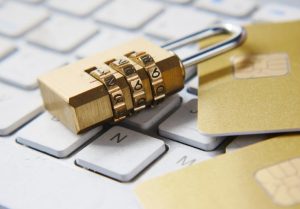Post-quantum cryptography: the future of digital security

Post-quantum cryptography (PQC) is a new foundation for digital privacy and trust. Algorithms developed to withstand quantum attacks will secure today’s information against tomorrow’s machines.
What Is Post-Quantum cryptography?
PQC is replacing RSA and elliptic-curve cryptography, which are used in the current public-key infrastructure, with constructs that are mathematically different: lattices, error-correcting codes, multivariate equations, and hash-based signatures. Most importantly, these constructs are not vulnerable to anyone who owns a larger quantum computer. PQC is urgent due to “harvest now, decrypt later” campaigns where adversaries have been quietly collecting encrypted traffic in anticipation of advances, breakthroughs, or theoretical quantum capabilities to break traditional private-key solutions.
Benefits for users
For the end-user, post-quantum security is appealing, in part because it is invisible to the end-user: their habits don’t change, and they don’t need to purchase any hardware to gain stronger defense. Archived photos, personal emails, medical portals, and cloud backups remain private decades into the future when every-day quantum decryption could reveal them. This peace of mind extends to Wi-Fi logins, mobile banking, blockchain wallets, and e-government services to close loopholes that otherwise nefarious actors could exploit once quantum computers become affordable. Critically, users will benefit from even greater protection, and there will be no need for any new configuration because post-quantum cryptography is integrated directly into servers, apps, and security providers.
This revolution will affect all sectors, from financial systems to online gaming, with online casinos ready to integrate this new technology despite already very reliable security systems. To avoid problems of any kind you should always rely on licensed operators and just check the full list here to know which are the best and the most secure on the market, then enjoy entertainment safeguarded by future-proof mathematics. Soon, updates will spread the same protections everywhere, so grandparents and gamers alike remain safe without ever hearing the term “quantum key encapsulation mechanism.” If you opportunistically use PQC now, your organization can safely assume confidentiality for the next few months or years. Unlike traditional encryption, encrypted messages, payments, and identities typically need to remain confidential for several decades. The very nature of PQC will allow a typical user to migrate to PQC with little disruption.
Business perspective and emerging standards
Moving to PQC poses obvious questions for enterprises about cost, compatibility, timing…but the value of proactive planning versus procrastination is clear. Hybrid TLS stacks are available that combine classical and quantum-safe primitives, supporting fallback to classical traffic if only one side supports it. The primary collection of tools for encrypting and signing messages includes lattice-based key-encapsulation mechanisms CRYSTALS-Kyber and NTRU, lattice-based signatures like CRYSTALS-Dilithium and Falcon, code-based Classic McEliece, hash-based SPHINCS+, and supersingular-isogeny SIKE, and multivariate Rainbow. Each has trade-offs concerning performance, certificate sizes, or related patents, allowing architects to properly fit mobile devices, edge gateways, and very high throughput data center workloads. Other developments include quantum-random number generators, physically unclonable functions, and post-quantum VPN concentrators. Major cloud providers are involved, HSM vendors and fintech companies have implemented pilot programs, and start-ups are selling drop-in libraries and hardware accelerators. As of this writing, practical quantum computers capable of breaking RSA have not emerged, yet policies like U.S. National Security Memorandum 10 to upgrade interfaces already, and the EU Cyber Resilience Act is ramping up on-line compliance, don’t wait. AI is already revolutionizing cybersecurity for small business by automating threat modeling, inventory audits, and algorithm selection; plus assisting teams with simulating transition risk to the point where they can orchestrate key rotation around the globe and protect critical infrastructure and consumer platforms. Businesses prioritizing AI in cybersecurity also will garner reputational trust, shorter compliance cycles, and innovation without fear of decrypting breakthroughs tomorrow.






